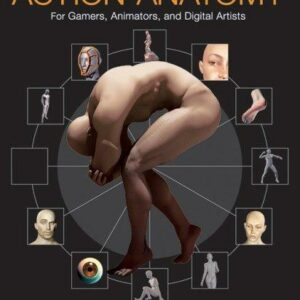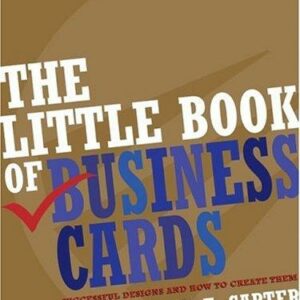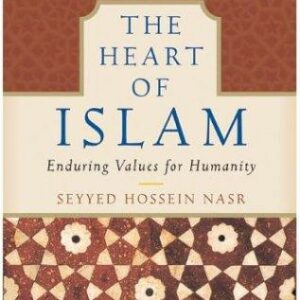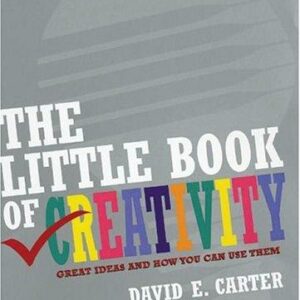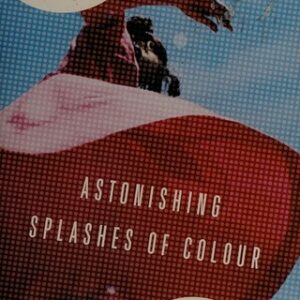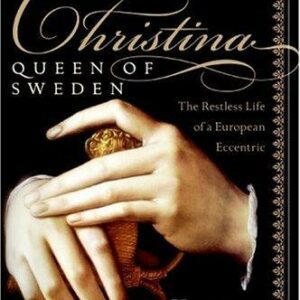Our Women on the Ground
$17.00
| Title | Range | Discount |
|---|---|---|
| Trade Discount | 5 + | 25% |
- Description
- Additional information
Description
Nineteen Arab women journalists speak out about what it’s like to report on their changing homelands in this first-of-its-kind essay collection, with a foreword by CNN chief international correspondent Christiane Amanpour
“A stirring, provocative and well-made new anthology . . . that rewrites the hoary rules of the foreign correspondent playbook, deactivating the old clichés.” —Dwight Garner, The New York Times
A growing number of intrepid Arab and Middle Eastern sahafiyat—female journalists—are working tirelessly to shape nuanced narratives about their changing homelands, often risking their lives on the front lines of war. From sexual harassment on the streets of Cairo to the difficulty of traveling without a male relative in Yemen, their challenges are unique—as are their advantages, such as being able to speak candidly with other women at a Syrian medical clinic or with men on Whatsapp who will go on to become ISIS fighters, rebels, or pro-regime soldiers.
In Our Women on the Ground, nineteen of these women tell us, in their own words, about what it’s like to report on conflicts that (quite literally) hit close to home. Their daring and heartfelt stories, told here for the first time, shatter stereotypes about the region’s women and provide an urgently needed perspective on a part of the world that is frequently misunderstood.
INCLUDING ESSAYS BY: Donna Abu-Nasr, Aida Alami, Hannah Allam, Jane Arraf, Lina Attalah, Nada Bakri, Shamael Elnoor, Zaina Erhaim, Asmaa al-Ghoul, Hind Hassan, Eman Helal, Zeina Karam, Roula Khalaf, Nour Malas, Hwaida Saad, Amira Al-Sharif, Heba Shibani, Lina Sinjab, and Natacha Yazbeck“Refreshing (and long overdue) . . . Will appeal to readers of all genders and backgrounds who want to broaden their understanding of the Arab world.”
—NPR
“A refreshing anthology of essays by female writers whose work cut through the many clichés of Middle East reporting. Their accounts provide honest and raw depictions, recounted from their own experiences and from other women whose stories are often overlooked when reporting on foreign policy and conflict.”
—The New York Times
“It has been many years since I have, at the end of a book, felt compelled immediately to start again from the beginning. . . . [A] superb compendium of reporting by Arab women . . . Intelligence and depth of insight . . . radiate[s] from these brilliant journalists.”
—Bobby Ghosh, Bloomberg
“Excellent.”
—n+1
“A masterpiece . . . [and] an absolute must-read.”
—Bust
“Truly groundbreaking.”
—InStyle
“Powerful.”
—Bustle
“Incredibly eye-opening.”
—Cosmopolitan
“Showcases journalism at its bravest. Determination, grit and humour shine through the writing of reporters who frequently face opposition from their own families.”
—The Guardian, “The Best Books of 2019”
“Refreshing and revelatory . . . A rich mosaic of an often-misunderstood region . . . [that] allows the authors to represent themselves not merely as female journalists or Arabs but as full human beings.”
—Ms. Magazine
“Several of the[se women] have reported bravely on the conflict in Syria and the travails of women living under ISIS rule. . . . They provide a perspective and a range of contacts and ideas born of experience that had previously been largely missing.”
—The New York Review of Books
“These nineteen brief, riveting essays argue for a more honest, experiential approach [to journalism].”
—The Times Literary Supplement
“These voices and stories are much needed.”
—Book Riot
“In an era where the truth is put up for debate, let’s celebrate these women, who venture into conflict to get at the truth.”
—Refinery29
“Remarkable [and] illuminating.”
—Booklist (starred review)
“[A] timely and affecting collection . . . [that] will appeal greatly to readers interested in global women’s issues, journalism, and the modern Arab world. . . . Heartrending and deeply humanistic.”
—Library Journal (starred review)
“Offering a blend of memoir, war reporting, cultural commentary, history, and politics, these powerful essays deliver insightful analysis.”
—Publishers Weekly
“These stories from the field are rare and remarkable. . . . A timely, engaging work that reveals why the journalist’s profession is so important and so endangered.”
—Kirkus
“Powerful [and] essential.”
—BookPage
“Candid, evocative and above all, daring.”
—Harper’s Bazaar Arabia
“[A] pioneering collection . . . Journalism at its most honest and reflective.”
—The Arts Desk
“Provides an intimate glimpse into the courage and pressures bearing on the determined women who report on their own homelands.”
—Chatham House
“Inspiring and extraordinary.”
—Stylist
“A beautiful book of gripping and illuminating essays.”
—America Magazine
“A compelling and gripping read.”
—Middle East Monitor
“A revelation.”
—The National
“Out of the gloom of the Middle East, this book brims with new voices—Arab women reporting on their world as no one else has seen it. A terrific read, full of insight and surprise.”
—David E. Hoffman, Pulitzer Prize-winning author of The Billion Dollar Spy
“This astounding, affecting collection offers a sweeping panorama of the contemporary Arab experience. . . . Rich with understanding and sincere emotional connection.”
—Megan K. Stack, author of Women’s Work
“A remarkable book that fills a tremendous gap . . . The voices of these trailblazing women are even more vital today.”
—Hassan Hassan, New York Times bestselling co-author of ISIS
“A dazzling book that elegantly demonstrates how to tell stories with humility, affection, and truthfulness.”
—Azadeh Moaveni, author of Lipstick Jihad and Guest House for Young Widows
“Stark and haunting. I loved this book. . . . A must-read.”
—Janine di Giovanni, author of The Morning They Came for Us
“With steely courage and pens of fire, these sahafiyat—Arab female journalists—tell the stories of their countries’ conflicts, providing rigor, depth and insight few outside commenters could match.”
—Molly Crabapple, co-author and illustrator of Brothers of the Gun and author of Drawing Blood
“The journalists in this book have demonstrated the highest professional achievements and courage. . . . Without them, the stories of today and tomorrow will remain only partly told.”
—Christiane Amanpour, from the ForewordZahra Hankir is a Lebanese-British journalist who writes about the intersection of politics, culture, and society in the Middle East. Her work has appeared in Vice, BBC News, Al Jazeera English, Bloomberg Businessweek, Roads & Kingdoms, and Literary Hub, among others. She was awarded a Jack R. Howard Fellowship in International Journalism to attend the Columbia Journalism School and holds degrees in politics and Middle Eastern studies.
Christiane Amanpour (foreword) is CNN’s chief international anchor and host of the network’s award-winning, flagship global affairs program Amanpour, which also airs on PBS in the United States. She is based in the network’s London bureau. Christiane’s illustrious career in journalism spans more than three decades. After joining CNN in 1983, Amanpour rose through the organization, becoming the network’s leading international correspondent reporting on international crises in the Gulf War, Iraq, Afghanistan, North Korea, Palestinian territories, Iran, Sudan, Israel, Pakistan, Somalia, Rwanda, the Balkans, Egypt, and Libya. Amanpour has interviewed most of the top world leaders over the past two decades and has received every major broadcast award, including an inaugural Television Academy Award, eleven News and Documentary Emmys, four Peabody Awards, and nine honorary degrees. In 2014, she was inducted into the Cable Hall of Fame and in 2018 was inducted into the Broadcasting & Cable Hall of Fame. She is a member of the American Academy of Arts and Sciences, a Commander of the Most Excellent Order of the British Empire, an honorary citizen of Sarajevo, and a UNESCO Goodwill Ambassador. Amanpour is a graduate of the University of Rhode Island.
The Woman Question
Hannah Allam
When I speak before Western audiences about my years covering the war in Iraq as a journalist for McClatchy Newspapers, someone inevitably asks, “What was it like to be a woman over there?”
“Well, I’ve never been there as a man, so I’m not sure I can compare,” is the clever way some of my friends reply to the same question.
I remind myself to borrow the line, but I can never quite remember to use it because when I hear the question, I see faces. Ban. Shatha. Sahar. Faten. Huda. Alaa. Jinan. Raghad. I think of the slivers of Iraq that they and many other women showed me, spaces that were off-limits to my male colleagues. Kitchens where meals were prepared without electricity. A bedroom with a mortar crater in the ceiling. A beauty salon that banned political talk so customers could get their hair done in peace. “Ladies’ hours” at the Babylon Hotel swimming pool, where sunshine hit bare skin and the war lurked just over a tall concrete barrier.
Reporting on Iraq through the eyes of its women was illuminating, but, perhaps more important, it was more representative of the population as a whole. Years of bloodshed had left Iraq with a population that was more than half women, many of them heads of households because their men were dead or missing or exiled. When the “woman question” comes up at public talks, I explain the importance of covering women’s stories by evoking the grisly math of car bombings.
At the height of the sectarian war, in 2006, car bombings were so commonplace that we stopped reporting on them unless twenty or more people were killed. For a year I didn’t bother to set my alarm before going to sleep because I knew I’d be awakened every morning by a thunderous boom. It wasn’t unusual to record daily car bomb death tolls of eighty or more. Because the most frequent targets were government and police buildings, the vast majority of the casualties were men.
Consider those numbers for a moment: eighty dead men meant eighty new widows and dozens of newly fatherless children. Every day. That meant that each week, more than five hundred Iraqi women suddenly became the sole providers for their families, setting their own devastation aside to keep their children fed and housed. They sold their wedding gold to buy bread. They felt like burdens on the extended families who took them in.
At their most desperate, some women entered into so-called temporary marriages that weren’t intended to last long. Essentially, these marriages were prostitution with a thin religious veneer: men with money to spare would pay the women in exchange for sex, but because the couple was technically “married,” however briefly, the arrangement was deemed legitimate according to some Shi’a Islamic rulings.
A widow named Nisreen told me her hands shook and her face reddened with shame when she signed a temporary marriage contract in exchange for fifteen dollars a month plus groceries and clothes for her five children.
“My son calls me a bad woman, a prostitute. My children have no idea I did this for their sake,” Nisreen said.
Before I first traveled to Iraq in the summer of 2003, I read an article in Rolling Stone in which a U.S. military officer marveled at the toughness of Iraqi women and mused that the advance might not have been so easy had U.S. forces faced the country’s women. It was a comment meant to emasculate the men as much as it praised the women, and I would hear many versions of it when I was around U.S. troops.
Even in the Middle East, where there is no shortage of heartache, Iraqi women are known to be particularly tough. The guttural Iraqi accent only underlines that reputation. Nelly, a chain-smoking, melodramatic Egyptian hairdresser in Baghdad, once whispered to me that Iraqi women were the region’s most beautiful-until they opened their mouths.
I observed that tough exterior in hundreds of Iraqi women I met over the years. The elderly women trudging through the southern marshes with heavy sacks of reeds strapped to bowed backs. The stoic mothers looking for their sons among the corpses strewn at the scene of a suicide bombing. The pregnant militant who put a gun to my head in a Sadr City alleyway, and my Iraqi female friend who calmly swatted it away and lectured the attacker about her terrible manners.
Those sorts of stories accumulated until they formed an archetype: the tragic yet resilient Iraqi woman, a metaphor for the country itself. In hindsight, it seems so facile to see Iraqi women only through the prism of their war-ravaged lives, but how else do you report a story where pain is etched on the face of every woman you interview?
Even though several women correspondents covered Iraq, there was an unspoken understanding that if you delved too deeply into women’s lives, you risked being labeled as soft, or missing the point. And the point, at least for many of our male colleagues, was the combat, the “bang-bang,” in the parlance of war photographers. I’ll never forget the sting when one of my male colleagues let out a deep sigh as I told him about a piece I was writing on civilians: “Oh, Hannah and her PIPS.” The acronym, he said, stood for “Poor Iraqi People Stories.”
The PIPS captured the gloomy reality of war, but not the women themselves, at least not in a three-dimensional way. Amid the nonstop carnage, I seldom got to write about how witty or sweet or vulnerable Iraqi women could be. Those were the private memories, written in my heart if not in my notebook, and the ones that I recall more easily than any I published under a Baghdad dateline.
Of course, Iraqi women were more than capable of telling their own stories, and did so whenever they had the chance. Our bureau for McClatchy Newspapers was unusual: it employed three consecutive Arab American women bureau chiefs and more Iraqi women reporters than any other Western news agency. When the local staff saw how rarely civilian life made it into news stories that focused on the bloodshed and political turmoil, they started a blog, Inside Iraq, for which they wrote pieces using their own experiences to illustrate the human impact of war and occupation. The blog gained a following of loyal readers from around the globe.
In 2007, the International Women’s Media Foundation awarded six Iraqi women from our bureau the prestigious Courage in Journalism Award. They were the first winners from Iraq in the history of the prize. The honorees included a woman who had to retrieve her nephew’s dismembered body from a morgue because militants would’ve killed any man who showed up; one who had nearly died in a bombing but returned to work a couple of days later, her hearing still impaired from the blast; and one who commandeered an ambulance to sneak into a hospital that was on lockdown because the Iraqi government was trying to hide the civilian deaths from a disastrous operation.
The women received their awards from Angelina Jolie and Meg Ryan at glitzy ceremonies in New York and Los Angeles. They basked in the moment, but knew their fairy tale would soon be over. There was still so much to do back home. Sahar, one of the honorees and a gifted writer with an unfailing moral compass, delivered the acceptance speech, explaining why she chose such dangerous work.
“It’s because I’m tired of being branded a terrorist; tired that a human life lost in my country is no loss at all,” she told the audience. “It is our responsibility to do our utmost to acquire the answers, to dig them up with our bare hands if we must.”
I wish I could convey how devilishly funny my Iraqi girlfriends were, but the problem with sharing such memories is context. Things people find hilarious in wartime come off as odd or in poor taste in normal life. And nobody does gallows humor like Iraqis. As the years stretched on without the restoration of power, a popular joke was that a distraught boy runs up to his mom and sobs that his father had touched a wire and been electrocuted. The mother replies: “Thank God! There’s electricity!”
To pass the time in traffic snarls, my friend and translator Ban, a literature buff who used to tell me Iraq was waiting for Godot, invented a game called Is That the One? We’d sit in the backseat and peer out the windows, looking for cars that sat a little too low. “There it is!” I’d yell, spotting a Mercedes that seemed suspiciously heavy, as if it were crammed with explosives. “Is that the one?” I’d ask Ban, meaning, “Is that the car bomb that’s about to blow us to smithereens?” “No! That’s the one!” she’d reply, pointing out a flatbed truck stacked with unmarked boxes. At the time, we found this endlessly entertaining and not the least bit macabre.
When your days hover so closely to death, the pursuit of fun becomes thrilling and a little reckless. It’s as if you know you’re on your way out, so why not really live it up? After the U.S. military imposed a curfew in 2003, Iraqi women friends would often crash in my room. We’d play music and dance our hearts out, twirling until we forgot that we were in a dingy hotel room with shatterproof tape on the windows and flak vests by the door. A few Iraqi women I knew swallowed black-market pain pills or smoked hashish mixed with tobacco. They got manicures even when insurgents began tossing Molotov cocktails through the salon windows. Some undergrads at Baghdad University wore tight skirts and left their hair uncovered in defiance of flyers promising death for girls who didn’t veil.
I knew one young woman, the daughter of a cherished friend and a recent dental school graduate, who refused to let “the situation”-Iraqis’ preferred euphemism for sectarian slaughter-deter her from pursuing her dream. She went door-to-door in Baghdad neighborhoods, offering free checkups and minor dental procedures. Her mother, who’d already lost a son to crossfire, was fearful but proud.
“This is madness!” I would tell her. “Who knocks on strangers’ doors in a civil war?”
“I do,” the young dentist replied.
It was the tiny, ordinary pleasures that were most missed: a shopping excursion without fear of kidnapping, sipping chai on a balcony without the crackle of sniper fire, going for a leisurely drive uninterrupted by checkpoints.
Ban’s husband, Selwan, the love of her life who later was gunned down by insurgents, bristled under the traditional customs of his homeland. He was proud that his wife earned the same salary he did, and he found it amusing that Ban and I would steal his car keys and go for joyrides at a time when many families thought it too risky for women to drive.
Our favorite route was along the Tigris River, looping back to the highway and then across Jadriyah Bridge. At a certain stretch, there was a big bump in the road, and if you hit it fast enough, the whole car would lift a little, like in action movies. We lived for that bump, for that fleeting feeling of being airborne and free, Thelma and Louise in Baghdad.
One beautiful spring day in 2004, Ban and I coasted along the bridge, belting at the top of our lungs a song we both loved by the Tunisian pop star Latifa. We whizzed past funeral banners, past the remnants of palm groves the Americans had chopped down to deter snipers, past a sand-colored mosque. The bump was coming up and we were excited for it, cranking the music up as high as it would go.
We barreled toward our favorite spot, ready for that familiar rush, when I saw a black flash out of the corner of my eye. I looked in the rearview mirror and saw that we were being forced off the road by a massive, Blackwater-style American security convoy. The lead SUV was inches from ramming the back of our car. A man with an assault rifle angrily motioned for us to move, and it was clear the convoy had been trying to pass us for a while. We hadn’t heard the honking over our music.
My legs went to jelly and I swerved out of their way as fast as I could. I’d seen a convoy like this shoot an unarmed man right in front of me, and had heard dozens of similar stories from Iraqis. I have no idea why they didn’t shoot us; maybe they were close enough to see we were women.
Badly shaken, Ban and I drove home in silence, going so slowly that hitting the bump was anticlimactic. We made a pact not to tell Selwan for fear he wouldn’t let us take the car out again.
Later that evening, after our nerves had calmed, we started giggling about what a dumb move it was, nearly sacrificing our lives for a pop song and a bump in the road. But given all the gruesome deaths we had seen in Iraq, we agreed that rocking out with your best friend in a moment of sheer bliss wouldn’t have been such a bad way to go.
What was it like to be a woman in Iraq? The women I met worked tirelessly to keep day-to-day life functioning smoothly, even when they were living in the midst of a weeks-long battle, as was the case in the summer of 2004 inside the Imam Ali shrine.
The shrine is a shimmering monument of gold and peacock-blue mosaic topped with an onion-shaped dome that looks like the turban of a pasha from long ago. On calm days, pigeons mill about, looking for scraps of food from the Shi’a Muslim pilgrims who come to the Iraqi holy city of Najaf in droves.
But in the awful summer of 2004, the U.S. military surrounded the compound in an attempt to drive out Mahdi Army insurgents who were camping out inside. The pigeons had flown away-nature’s early warning system-and most Western reporters had left the shrine. Only a handful remained inside with the Mahdi Army guerrillas, including me, along with dozens of Iraqi civilians seeking refuge; they were hoping that even if the Americans flattened the city, they wouldn’t dare violate the sanctity of one of Islam’s most revered sites. One night, when U.S. bombing raids shook the compound so violently that it felt as if our skeletons would push through our skin, I feared they had bet wrong.
In my memories of that August, heat and fear are intertwined, each making the other worse. Even in wartime, women in Najaf wear abayas, long billowy robes that leave only their faces, hands, and feet exposed. I remember sweat trickling down my back as I crouched in the courtyard listening to gunfire. Running in an abaya was a special skill that we honed each time we had to take cover: you use your left hand to hold the silky fabric under your chin to keep it in place and your right hand to hike up the bottom to free your feet. Then you run in a zigzag pattern to avoid giving a clear shot to the snipers.
US
Additional information
| Weight | 8.6 oz |
|---|---|
| Dimensions | 0.8100 × 5.2000 × 7.7100 in |
| Imprint | |
| ISBN-13 | |
| Author | |
| Audience | |
| BISAC | |
| Subjects | syrian war, sociology books, books about war, diverse books, political philosophy, world politics, journalist books, arabic books, immigration books, personal essays, war reporting, middle east books, Our Women on the Ground, Zahra Hankir, Christiane Amanpour, journalist gifts, essay collections, geopolitics, feminism, Sociology, We Need Diverse Books, middle east, political science, history books, women in history, government, feminist, books for women, POL059000, feminist gifts, political books, international politics, LCO019000, feminist books |
| Format |



